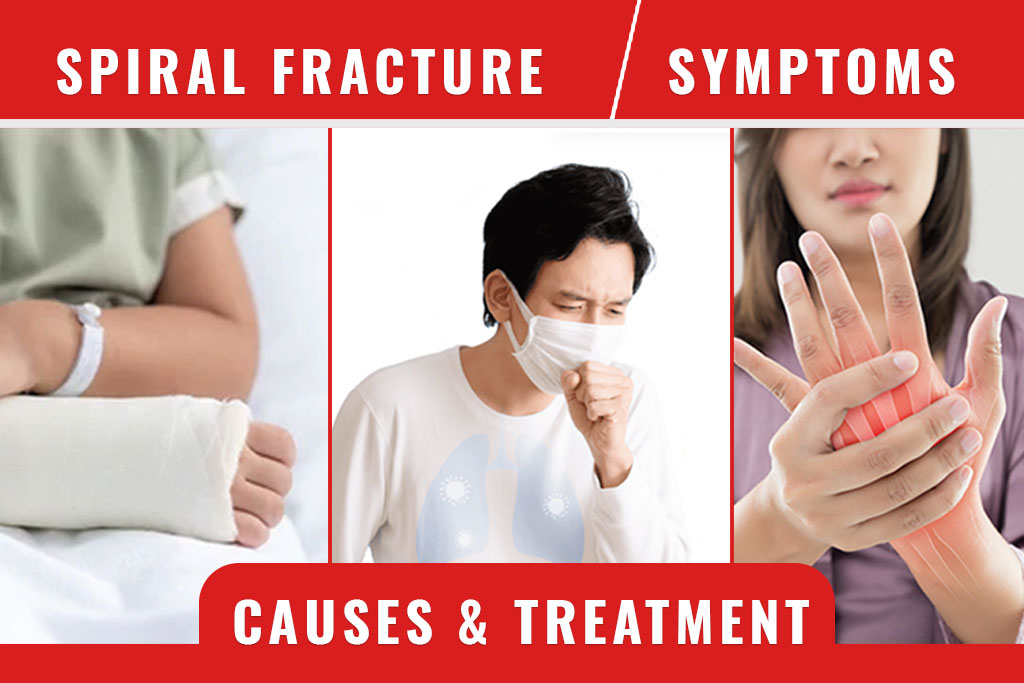A spiral fracture is an encircling pattern of shattered bone. This kind of fracture happens when the bone is twisted during an injury. Long bones, or those that are longer than they are wide, are usually affected by spiral fractures and can be found in your hands, feet, arms, and legs. The degree of these injuries varies, as do the necessary medical interventions and recovery periods.
The afflicted bone sections, underlying causes, available treatments, and recovery times are all covered in this article on spiral fractures.
What is a Spiral Fracture?
One kind of fractured bone is a spiral fracture. They occur when a twisting motion breaks one of your bones. They produce a fracture line that resembles a corkscrew and spirals around your bone. Spiral fractures may also be called full fractures. This indicates that the break’s line passes through your entire bone.
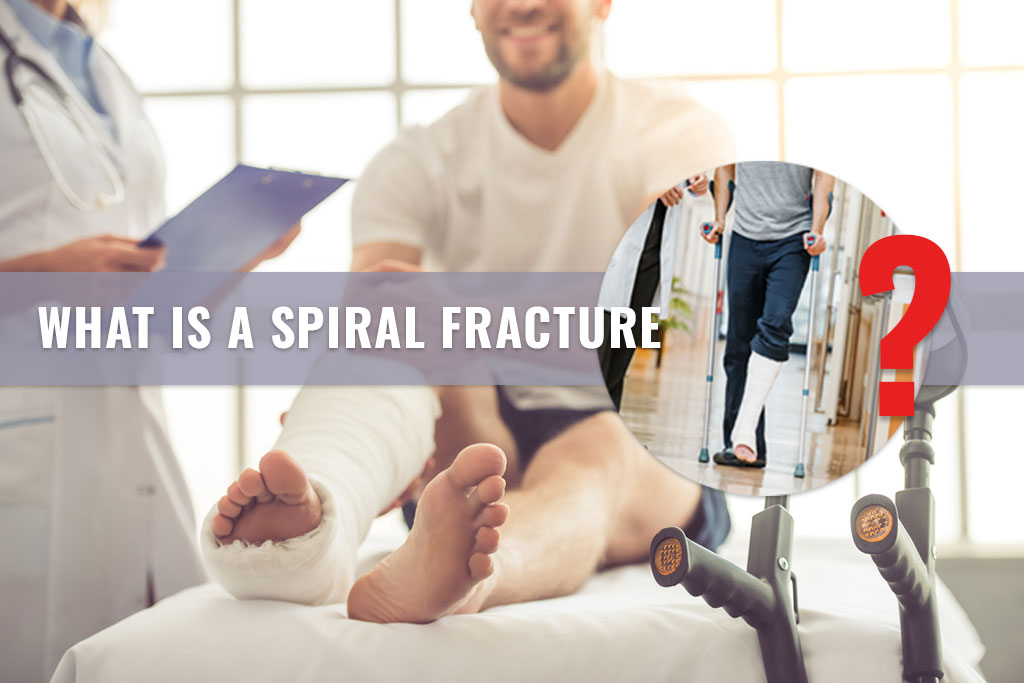
Spiral fractures usually affect long bones in your body. Some of the most common include
- Spiral Femur Fracture (thigh).
- Tibia (shin).
- Fibula Spiral Fracture (calf).
- Spiral Ankle Fracture (Talus).
- Spiral Finger Fracture (Phalanges)
- Spiral Fracture Hand (metacarpals)
- Spiral Leg Fracture
Falls or other traumas are nearly always the cause of spiral fractures. To fix your broken bone, surgery might be required. Depending on which bones are broken and what caused them, your recovery time will vary. Healing from a spiral fracture typically takes many months.
Spiral Fracture vs Toodler Fracture
A particular kind of spiral fracture that typically affects toddlers under three years old is called a toddler fracture. The same twisting actions that create other spiral fractures also cause toddler fractures, although they almost always affect children’s shin bones (tibia).
Whatever the labels and vocabulary used to describe your fracture, the most crucial initial step is to have your injury evaluated as quickly as possible by a medical professional.
Spiral Fracture vs Oblique Fracture
There are two forms of bone fractures: oblique fractures and spiral fractures. These are distinct phrases that offer your healthcare professional particular information about the type of fracture you have and its shape.
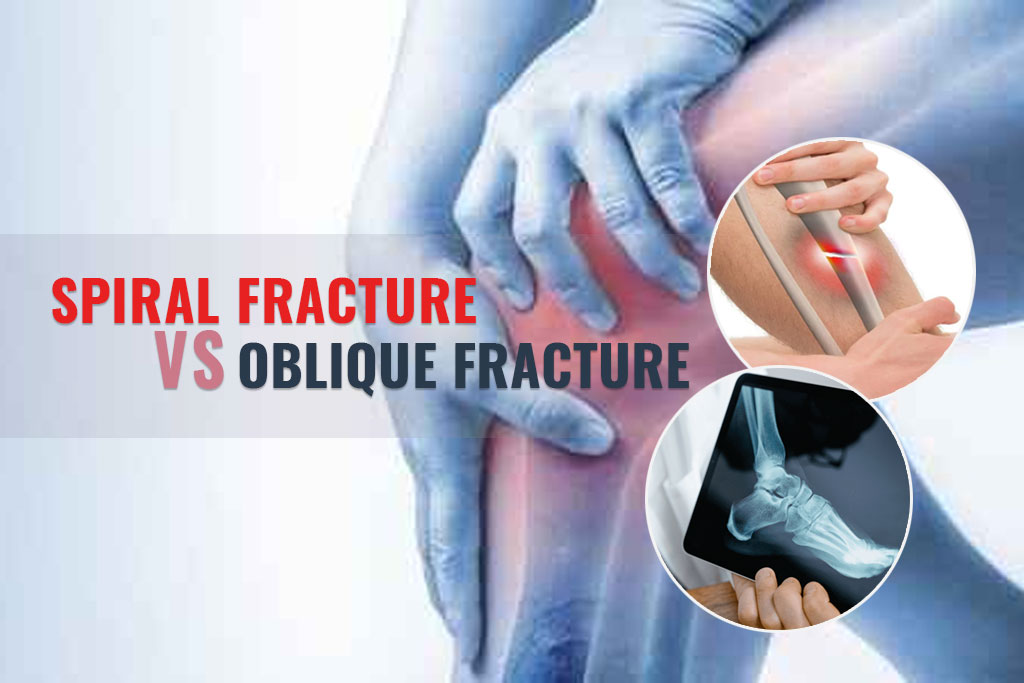
Your bone might break at an angle, resulting in an oblique fracture. The fracture appears as an angled, straight line spanning the width of your bone. They are typically brought on by falling onto your bone at an angle or by an abrupt blow to your bone from an angle (such as in a car accident).
When a fracture loops around the length of your bone, resembling a spiral staircase, it is called a spiral fracture. Spiral fractures often happen in sports-related injuries when bones are severely bent (such as when tackling in football).
Who Gets Spiral Fractures?
Like all bone fractures, spiral fractures can happen to anyone. Spiral fracture is particularly true given that traumas or accidents are their causes. A spiral fracture may be more likely to occur if you are at risk for falls. All kinds of fractured bones, including spiral fractures, are more common in people with osteoporosis.
How Does a Spiral Fracture Occur?
Usually, a spiral fracture results from twisting or rotating the bone. Spiral fractures can occur in a car accident, when playing sports, or when you fall asleep. The impact breaks the bone in a spiral pattern due to its force. Serious consequences may arise from spiral fractures, particularly when the bone pierces the skin. To avoid infection, you must seek medical assistance right once if this occurs.
Spiral Fracture Causes
The most frequent causes of spiral fractures are high-energy impacts and rotational forces acting on the bone, which can happen in sports, car crashes, workplace mishaps, or falls. When one end of a bone is fixed while the other continues to move, the resultant twisting stress on the bone frequently results in spiral fractures. The majority of spiral fractures in the lower extremities occur while the foot is planted but the torso is still moving.

When small infants fall on an outstretched leg, they frequently sustain unintentional spiral fractures in their lower legs. Sadly, spiral fractures in kids don’t always happen by accident. A radiologist or other healthcare professional will search for additional indications of abuse if they notice a spiral fracture on an X-ray.
Spiral fractures can result from any impact that twists your bones. They are typically brought on by anything abruptly pulling your body or one of your limbs out of its natural alignment. Among the most typical causes are:
- Falls.
- Car accidents.
- Sports injuries.
- Workplace accidents.
Spiral Fracture Symptoms
The most prevalent and visible sign of a spiral fracture is localized discomfort in the affected area. The degree of the injury determines the type of pain. Individuals have described the discomfort as heavy, dull, and excruciating.
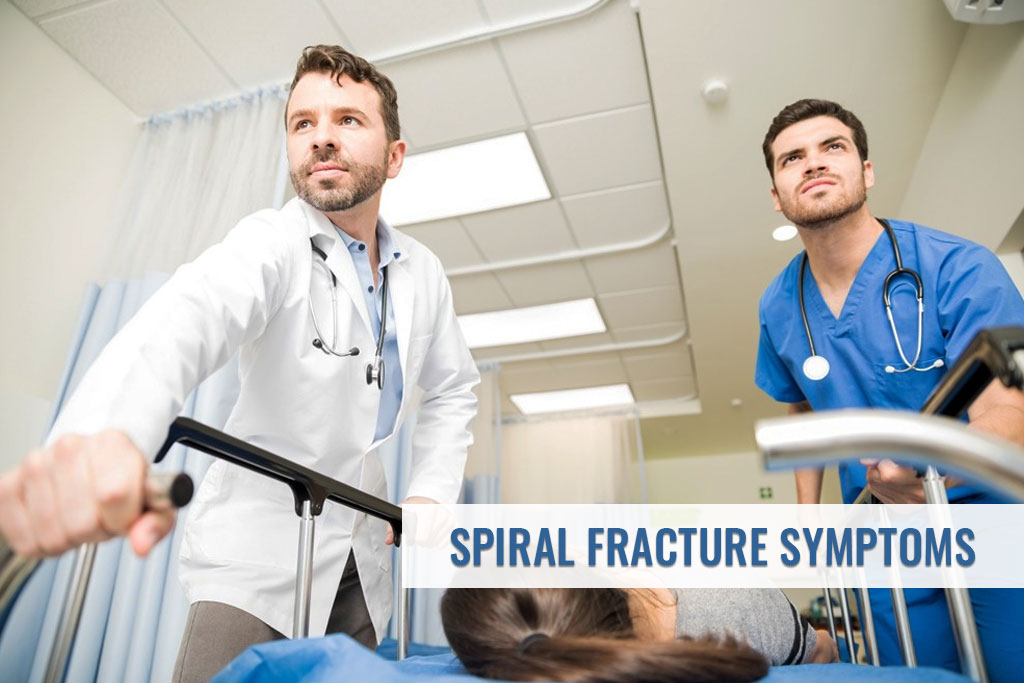
There may also be:
- Bone stiffness
- Restricted range of motion
- Swelling and redness
- Tenderness
In the case of an open fracture — a fracture where there is a break in the skin — you may see jagged bones and bone fragments, in addition to bleeding.
What Tests Are Done to Diagnose a Spiral Fracture?
After a physical exam, you’ll likely need at least one of a few imaging tests:
- X-rays: An X-ray will confirm any spiral or other fractures and show how damaged your bones are.
- Magnetic resonance imaging (MRI): Your healthcare provider might use an MRI to get a complete picture of the damage to your bones and the area around them. This’ll show them tissue around your bones, too. Injuries to muscles, connective tissue, and organs should be investigated.
- CT scan: If you need surgery, your healthcare provider or surgeon needs to know exactly how damaged your bones are. A CT scan will give them a more detailed picture of your bones and the surrounding tissue than an X-ray.
Treatment for Spiral Fracture
Depending on which bone is shattered and how severe your initial break was, your spiral fracture may require different treatment. Your fractured bones must mend to become whole again. There are various therapies your healthcare professional might utilize, depending on how damaged they are and what broke them.
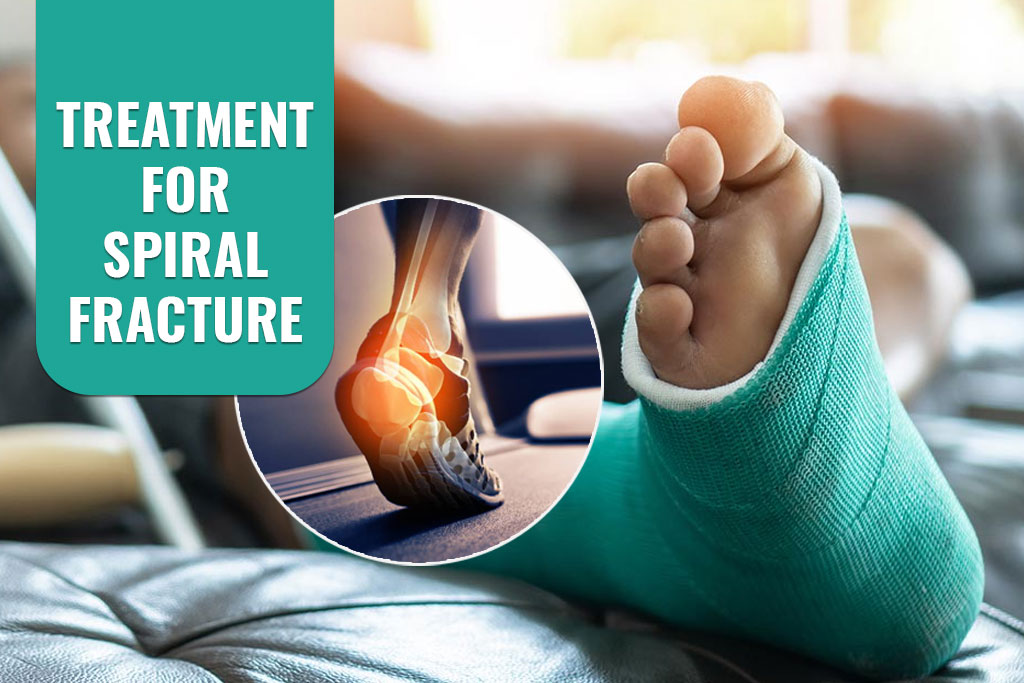
Owing to the way spiral fractures happen, the fractured bone that results typically has sharp edges. This may make the healing process more difficult. Additionally, the injury can cause bone fragments to come loose, which could complicate therapy even more. For these reasons, the course of treatment will vary depending on the degree of fracture and whether the bone is stable or displaced.
Treatment for a Stable Spiral Fracture
Treatment for a spiral fracture that is stable often entails immobilizing the bone with a cast for a duration of four to six weeks. In youngsters, stable fractures are typically more common.
Treatment for a Displaced Spiral Fracture
Treatment for a displaced spiral fracture almost always involves surgery due to the jagged bones that define the fracture. Your surgeon will carry out an open reduction procedure. You are placed under general anesthesia for this surgery. Your doctor will then make an incision in the afflicted location to realign the bone fragments.
Your doctor continues to evaluate the extent of the injury while it is being operated on. For instance, your doctor assesses and treats injuries if there is harm to the nearby blood vessels or muscles. After realigning the fractured bone, your doctor may use rods, pins, or screws to secure it in place. These devices might be temporary or permanent.
Recovery from Surgery
An open reduction procedure typically results in the limb being placed in a cast. It is going to be taken out in a few weeks. Recovery can be rather uncomfortable, particularly after surgery. It has been demonstrated that nonsteroidal anti-inflammatory medications, such as ibuprofen, slow down the healing process. Acetaminophen with codeine is therefore more frequently prescribed.
It depends on the severity of your injury if you need physical therapy. You will experience some loss of strength and range of motion while wearing a cast. Exercise and other treatments can help you regain them in the damaged limb.
What Are the Symptoms of a Spiral Fracture Hand?
There are several methods for diagnosing a fractured hand. Pain is the most prevalent symptom and is frequently quite intense. There may also be redness, bruising, or swelling in the area of the injury. Hands can be unstable or weak, and you might have trouble moving your thumbs or fingers. If the fracture is severe, your hand may clearly show abnormalities. It’s critical to consult a qualified healthcare provider as soon as you suspect you may have a hand fracture so that the injury can be appropriately diagnosed and treated.
If you have a hand fracture, your hand therapists will likely recommend that you wear a splint to immobilize the affected area and allow it to heal. It may be necessary to perform surgery to align the bones correctly in some cases. With proper treatment, most people make a full recovery from a hand fracture. If you want the injury to heal, follow your hand therapist’s instructions carefully.
How Long Does it Take a Spiral Fracture to Heal?
Bones grow very slowly, so many spiral fractures take about four to six months to heal. Prompt treatment is essential for proper healing. If you suspect you have a spiral fracture, see your doctor right away to get evaluated.
Conclusion:
Spiral fractures are scary-sounding injuries, but your healthcare provider and surgeon will get you back on your feet as soon as possible. Don’t rush your recovery. Take each step as it comes, and give yourself time to heal. Consult your doctor about keeping your bones strong and healthy, and get regular bone density screenings if you’re older than 50 or have a family history of osteoporosis.
